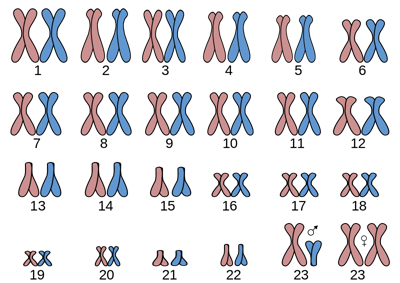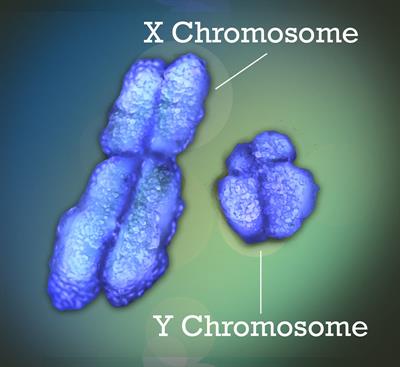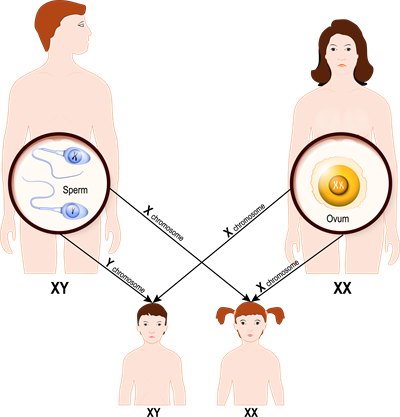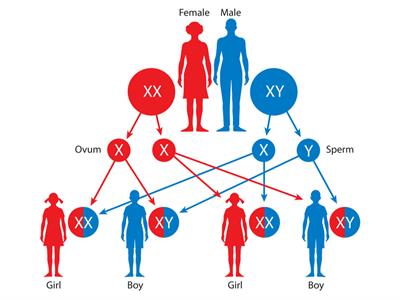
PUMPA - SMART LEARNING
எங்கள் ஆசிரியர்களுடன் 1-ஆன்-1 ஆலோசனை நேரத்தைப் பெறுங்கள். டாப்பர் ஆவதற்கு நாங்கள் பயிற்சி அளிப்போம்
Book Free DemoProkaryotes reproduce asexually through the process of cell division. But there is almost no variation between parent and offspring in asexual reproduction. As there are not many variations, their adaptation capability to changing environments will be less. So, these organisms are bound to survive under specific environmental conditions. Conversely, in sexual reproduction, the offspring will have variations compared to its parents. As there are many variations in sexual reproduction, the adaptation capability to the changing environment will be high, and they can survive in different environmental conditions. In asexual reproduction, only one parent is involved, but in sexual reproduction, two-parent organisms are involved, viz., Male and female.
Genetics not only deals with the transmission of traits and inheritance, but it also has a wide range of practical applications in fields such as plant and animal breeding. Human genetics is a broad field that helps us understand genetic traits and diseases. The first and most important application of genetics is the determination of sex in various organisms.
The progeny's sex is determined by the inheritance or transmission of sex chromosomes during gametic fusion. Depending on the nature of the sex chromosomes in male and female organisms, different organisms exhibit different types of sex determination mechanisms.
The biological process by which an individual's sexual characteristics develop, determining whether he or she is male or female, is known as sex determination.
Sex chromosomes
We have discussed how the two sexes involved in sexual reproduction must be somewhat different for various reasons. How is the gender of a newborn determined? Different species find different ways to accomplish this. Some organisms rely entirely on environmental cues.
Sometimes, the sex of the progeny is determined based on environmental cues. Environmental factors such as temperature determine the sex of the organism in the egg in some organisms.
Other animals, such as snails, can change sex because they are not genetically processed. An individual's sex is determined by genetics in humans. In other words, the genes inherited from their parents determine the sex of their offspring. Humans, mammals, some insects, and a few plant species all have the \(XY\) sex-determination system.
Specific chromosomes determine an individual's sex. These are known as sex chromosomes or allosomes. The \(X\) and \(Y\) chromosomes are referred to as sex chromosomes. Autosomes are an individual's normal chromosomes other than the sex chromosomes.
Important!
Do you know!
TSD stands for temperature-dependent sex determination. According to research, if a turtle's eggs incubate below \(81.86\) degrees Fahrenheit, the turtle hatchlings will be male. However, if the eggs incubate above \(87.8°\) Fahrenheit, the hatchlings will be female.
Types of chromosomal sex determination
\(XX\)-\(XY\) type:
Humans have \(23\) chromosome pairs (\(46\) chromosomes). Out of these \(23\) pairs, \(22\) are Autosomes, and only one is the 'Sex Chromosome,' which actively participates in the sex determination process. Males and females both have two sets of sex chromosomes. Males have one \(X\) and one \(Y\) (\(XY\)) sex chromosome, both of which are active. Females have two \(X\) (\(XX\)) sex chromosomes, one of which is active.

Chromosome number in male and female
Women have a perfect pair of sex chromosomes, both of which are referred to as \(X\). Men, on the other hand, have a mismatched pair in which one is a normal-sized \(X\), and the other is a short one called \(Y\). Females have two longer \(X\) chromosomes. Meiotic cell division occurs during gamete formation, and thus the gametes formed have \(23\) chromosomes (half the original number). Males produce two types of gametes, one with the \(X\) chromosome and the other with the \(Y\) chromosome. In females, only the same type of gametes is formed, each with only one \(X\) chromosome.

X and Y chromosome
Note: A male sperm cell contains approximately half \(50\%\) of the \(Y\) sperm cells and the other half \(50\%\) of the \(X\) sperm cells.

\(XX\)-\(XY\) type sex-determination system in humans
During the fertilisation process, male and female gametes combine to form a diploid zygote. This fixes the chromosome number. If a male gamete with an \(X\) chromosome fuses with any female gametes, the resulting zygote has both \(X\) chromosomes.
How do the chromosomes take part in this formation?
When a male gamete with a Y chromosome fuses with any of the female gametes, the resulting zygote has one \(X\) and one \(Y\) chromosome. A female zygote with two \(X\) chromosomes (\(XX\)) develops, whereas a male zygote with one \(X\) and one \(Y\) chromosome develops.
Note: Fertilization of the egg (\(22\)+\(X\)) with a sperm (\(22\)+\(X\)) results in the birth of a female child (\(44\)+\(XX\)). Fertilization of the egg (\(22\)+\(X\)) with a sperm (\(22\)+\(Y\)) results in a male child (\(44\)+\(XY\)).
All of the offspring inherit the \(X\) chromosome from their mother. The child who inherits the father's \(X\) chromosome will be a daughter. The child who inherits the \(Y\) chromosome from his father will be a son. Characteristics associated with the \(X\) or \(Y\) chromosomes are passed down to the next generation.

Sex determination in humans
Important!
- Female is homogametic (\(XX\)) in this type of sex determination, which means she produces only one type of gamete. Females have two \(X\) chromosomes.
- Males are heterogametic (\(XY\)), which means they produce two types of gametes.
- In males, \(X\) chromosome containing gametes are referred to as gynosperm, while \(Y\) chromosome-containing gametes are referred to as androsperm.
Reference:
https://www.flickr.com/photos/nihgov/28189336441
https://commons.wikimedia.org/wiki/File:Human_karyogram.svg